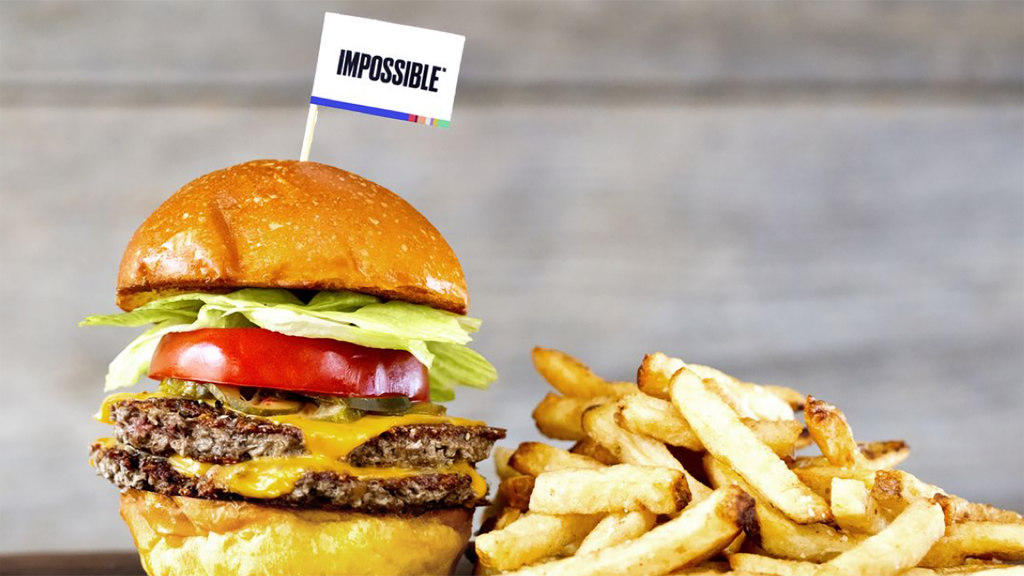Key Takeaway
For fast-growing consumer businesses like those in the food industry, expansion into new markets can happen at a rapid pace. It’s vital for the whole team to have a detailed understanding of rising trends and cultural nuances in each new market to make their entrance as successful as possible.
Impossible Foods set out on a mission to make the global food system more sustainable. Since 2011, their team of expert scientists, marketers, engineers, business minds, chefs and foodies have explored new methods of creating healthy, sustainable dishes with ingredients that come from nature – starting with a burger made entirely from plants.
After all, we are what we eat.
After 5 years, they reached success with their first product, the Impossible Burger. It’s arguably the closest a veggie burger has come to replicating the taste of meat.
Beyond exploring new sources of nutrition, the team has given themselves some near Impossible Goals. Based in Silicon Valley, they launched the dish in their first partner restaurant in July 2016. Since then, they’ve launched in 32 restaurants across the US and intend to reach a staggering 1,000 by mid-2018.

5% less land
Impossible Burgers need 5% less land to produce than their meat-filled counterparts

75% less water
Each Impossible Burger requires 75% less water than it takes to produce a burger

85%-87% less CO2 emissions
Vegan burgers generate far fewer greenhouse-gas emissions than beef

1
# of restaurants serving the Impossible Burger in July 2016

32
# of restaurants serving the Impossible Burger in July 2017

1,000
# of intended restaurants serving the Impossible Burger by July 2018
Observing trends in local markets
With fast-growing consumer-facing products like those in the food industry, it’s vital that the team nails their branding, messaging and market entry strategy in each new location, and aligns with the right partners to make launch successful. That means having their fingers directly on the pulse of what’s happening in each new location before they enter.
Ashley Geo, PR & Communications Specialist at Impossible Foods, relies on real time alerts from Meltwater to inform her team’s messaging, branding and market entry strategies. “We’ve been expanding really quickly – entering new markets on a monthly basis.”

Getting notifications in real time helps me stay on top of trends as they appear in the cities we’re looking at.
Ashley and her team use localized media data to determine how best to position themselves. By keeping an eye on the latest buzz, they’re able to differentiate their content, and to determine what type of launch events would resonate best with each audience.
“I set up geo-targeting filters to look at food and cultural trends happening in each city – whatever it is that’s causing buzz at the point in time when we’re looking to launch. We use this to inform our marketing strategy, messaging, social media, press releases and launch events in that city.”
Beyond media, the team carefully observes cultural outlets like Eater and CultureMap, which are indicative of food trends in local areas. “I look at the amount of engagement posts from these outlets have gotten to help me get a quick read of the culture and gauge trends in that city.”

Further Insights
Another critical data point when entering a new consumer market is influencers. “I look at my notifications and carefully observe the influencers that keep popping up. If I see a post that has generated over 500k likes, for instance, I look at who posted it and notify the marketing team.”
The Impossible Foods team relies heavily on Outside Insight and research data, implementing competitive benchmarking to see what other brands in each region have done and give them an effective measurement of success. This takes into account competitive KPIs that allow them to evaluate their brand’s position in the market holistically.
Even areas that present seemingly similar demographics can follow a host of different cultural values and social differences. Those brands that learn how to leverage these nuances to their advantage will successfully navigate market expansion and remain one step ahead of competition.

